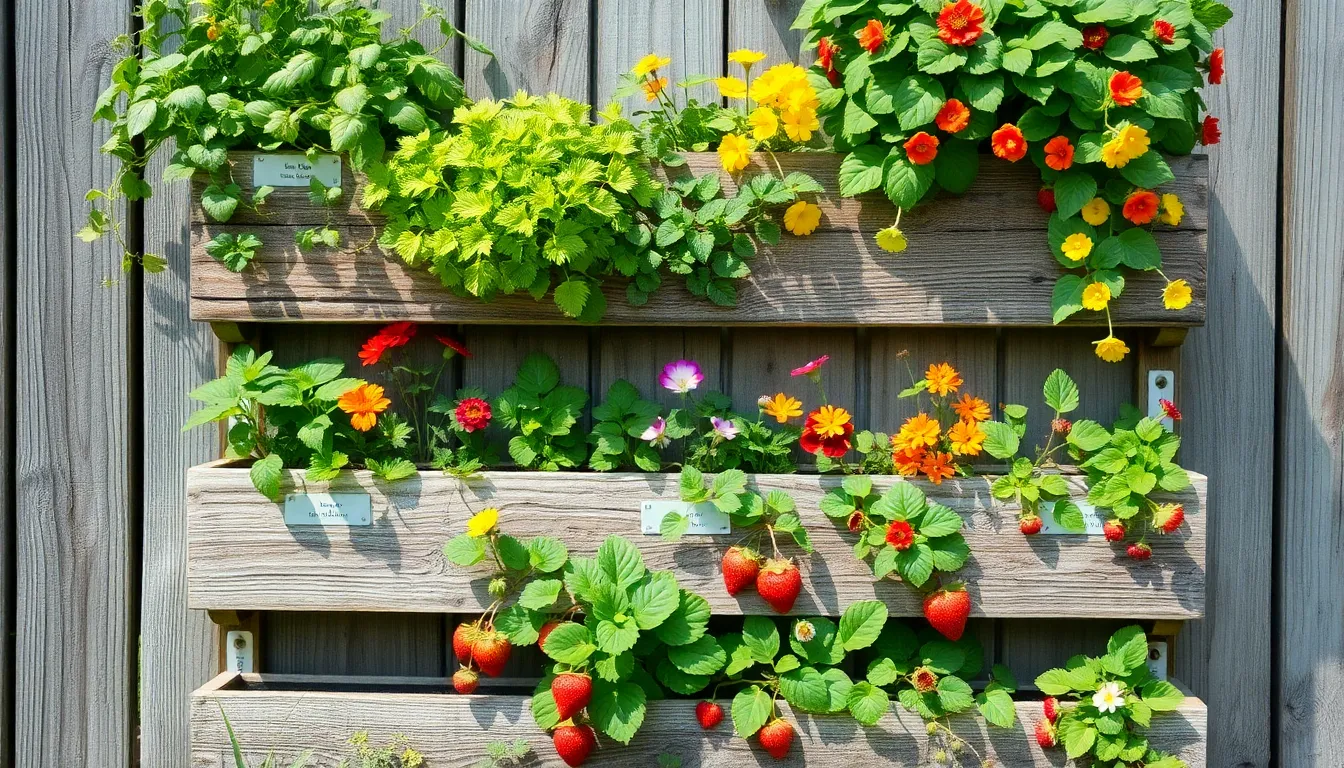In the ever-evolving world of gardening, the vertical garden stands tall as an innovative and exciting approach to plant care—one that captivates both novices and seasoned green thumbs alike. For those with limited horizontal space or an artistic flair for nature, vertical gardening offers a refreshing perspective, transforming walls and fences into lush, living canvases. As you consider embarking on this upward journey, understanding the optimal timing is crucial to ensure your vertical garden thrives, providing both aesthetic pleasure and practical benefits.
Timing, as any gardener knows, can make all the difference between a flourishing paradise and a struggle to survive. This article will guide you through the seasonal cues and practical considerations essential for starting a vertical garden, whether you’re growing herbs in a sunny kitchen nook or creating a cascading display of flowers on your patio. By the end of this read, you’ll have a clear roadmap for when to plant, how to prepare, and what to expect as your garden reaches new heights.
For beginners, diving into vertical gardening might seem like an ambitious leap, but fear not—it’s more accessible than you might think. With the right guidance, you’ll soon find yourself reveling in the joys of watching your plants climb and flourish. Meanwhile, experienced gardeners will discover new methods and tips to enhance their existing skills, turning every wall into a potential garden. Eager to get started? Let’s delve into the timing, techniques, and tips that will help your vertical garden soar.
Understanding Vertical Garden Benefits

Vertical gardens offer a myriad of benefits, making them an excellent choice for gardeners with limited space. By growing plants vertically, you maximize your growing area without the need for additional land space, ideal for urban settings or small backyards.
One significant advantage is improved air circulation around the plants, which can help reduce fungal diseases. This is particularly beneficial for plants like tomatoes and cucumbers, which thrive in well-ventilated environments.
Additionally, vertical gardens can make harvesting easier and more efficient. When plants are grown at eye level, you can quickly spot ripe fruits and vegetables, ensuring a timely and bountiful harvest.
For beginners, consider starting with easy-to-grow plants such as herbs or leafy greens, which adapt well to vertical spaces. Use a lightweight potting mix with good drainage to prevent waterlogging, and water regularly to maintain consistent moisture levels.
Advanced gardeners might experiment with automated irrigation systems to maintain optimal watering schedules. These systems can be particularly useful for vertical gardens, where water tends to drain quickly due to gravity.
For those interested in aesthetics, vertical gardens can be a beautiful focal point, offering both visual appeal and privacy. Choose a variety of plant textures and colors to create an eye-catching display, ensuring that each plant’s light and water needs are met.
Choosing the Optimal Season
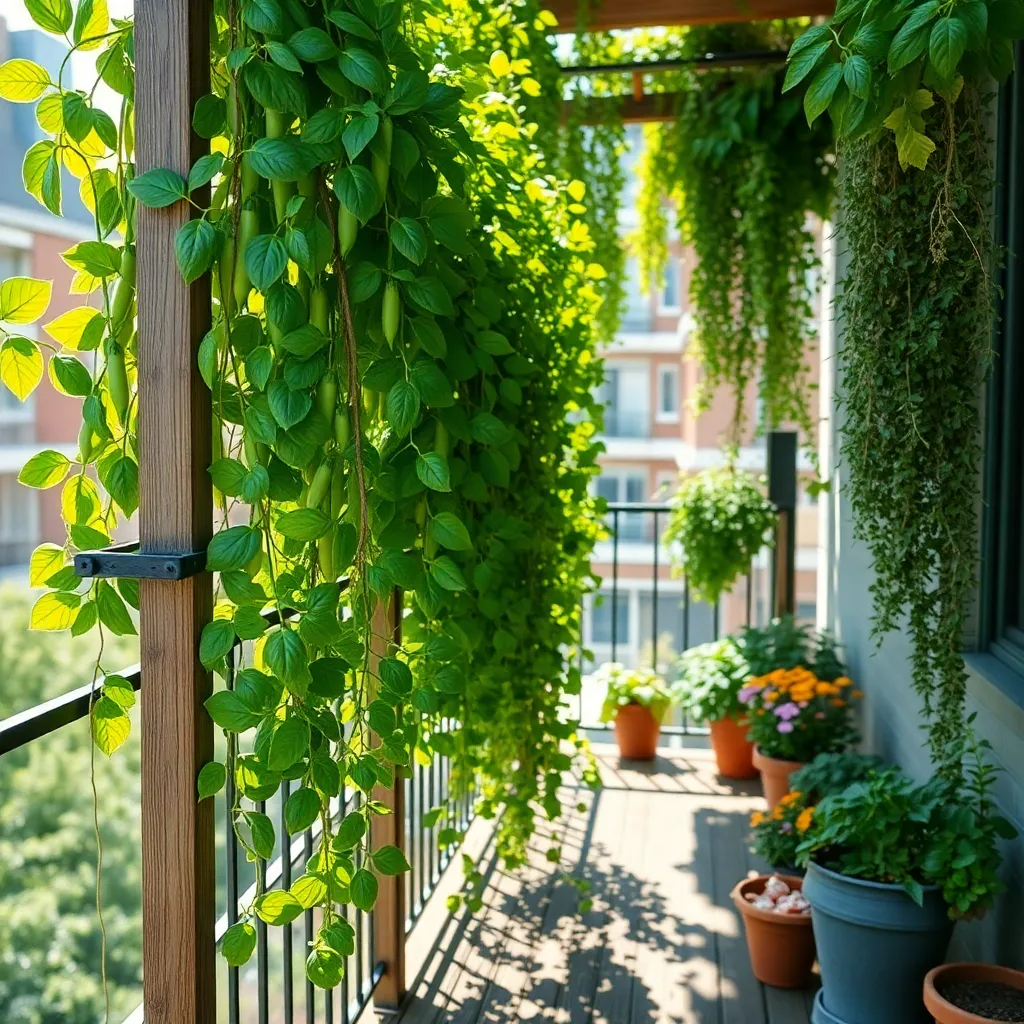
Selecting the right season to start your vertical garden can significantly impact the success of your plants. Generally, spring and early fall are optimal times for planting, as temperatures are moderate and conditions are ideal for plant growth.
During spring, the soil begins to warm, promoting root development and reducing the risk of frost damage. It’s an excellent time to plant a variety of vegetables, herbs, and flowers, taking advantage of the increasing daylight hours.
Alternatively, early fall offers cooler temperatures that reduce heat stress on plants, making it perfect for leafy greens and certain herbs. Ensure your vertical garden setup provides enough sunlight during this season, as daylight hours begin to dwindle.
Regardless of the season, consider the specific needs of your chosen plants, such as watering frequency and soil type. Use a well-draining soil mix to prevent root rot, and adjust watering based on seasonal rainfall and humidity levels.
Ideal Plants for Vertical Growth
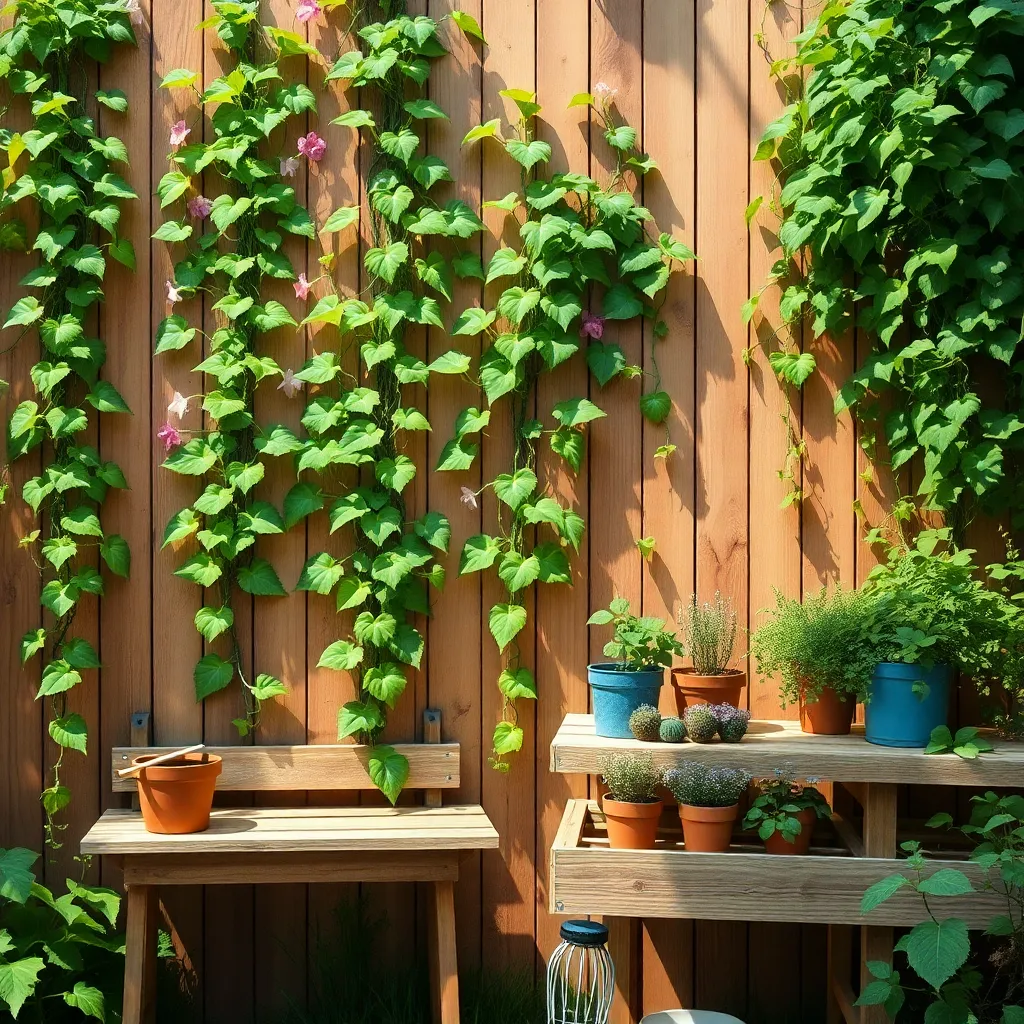
Vertical gardens are a fantastic way to maximize space, and selecting the right plants is crucial for success. Certain plants naturally thrive in vertical environments and can be trained to grow upwards, creating lush, green walls.
Vining plants like peas and beans are excellent choices for vertical growth. These plants benefit from support structures such as trellises or netting, which help them climb and spread effectively.
Consider incorporating herbs like mint, thyme, and oregano, which flourish in vertical gardens. These herbs require well-draining soil and regular watering to maintain their vibrant foliage and aromatic leaves.
For those looking to add visual appeal, flowering vines such as clematis and morning glory can add splashes of color. These plants need a sunny location and should be fertilized every few weeks during the growing season for optimal blooms.
Advanced gardeners might experiment with espalier techniques to train fruit trees like apples or pears against their vertical structures. These trees require regular pruning and a sturdy support system to ensure they grow healthily and produce fruit.
Installation Timing and Tips
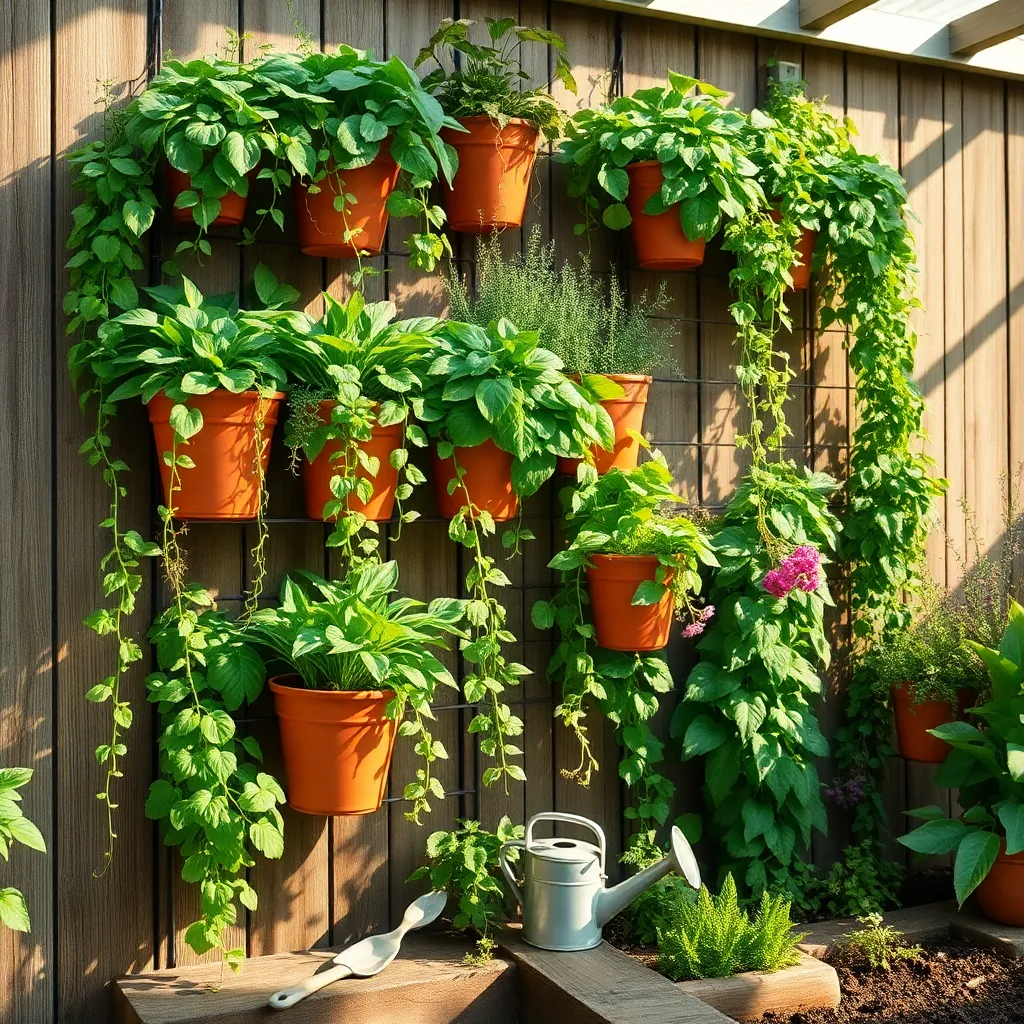
When planning a vertical garden, timing your installation is crucial for success. It’s essential to consider the best planting season for your chosen plants, which typically aligns with their natural growing cycles.
In most regions, the ideal time to install a vertical garden is in spring or early fall. These seasons offer moderate temperatures and adequate rainfall, creating optimal conditions for plants to establish their roots.
Before installation, ensure you have the right materials and tools ready, such as a sturdy frame, appropriate soil, and a reliable watering system. A vertical garden often requires a lightweight soil mix, rich in organic matter, to support plant health and growth.
For beginners, starting with easy-to-grow plants like herbs and small vegetables can simplify the process. These plants are generally forgiving and can thrive with regular watering and adequate sunlight exposure.
Advanced gardeners might experiment with more intricate designs or challenging plant species, requiring specific care such as controlled humidity or tailored nutrient solutions. Regular maintenance, including pruning and pest control, will keep your vertical garden flourishing and extend its lifespan.
Maintenance Throughout the Year
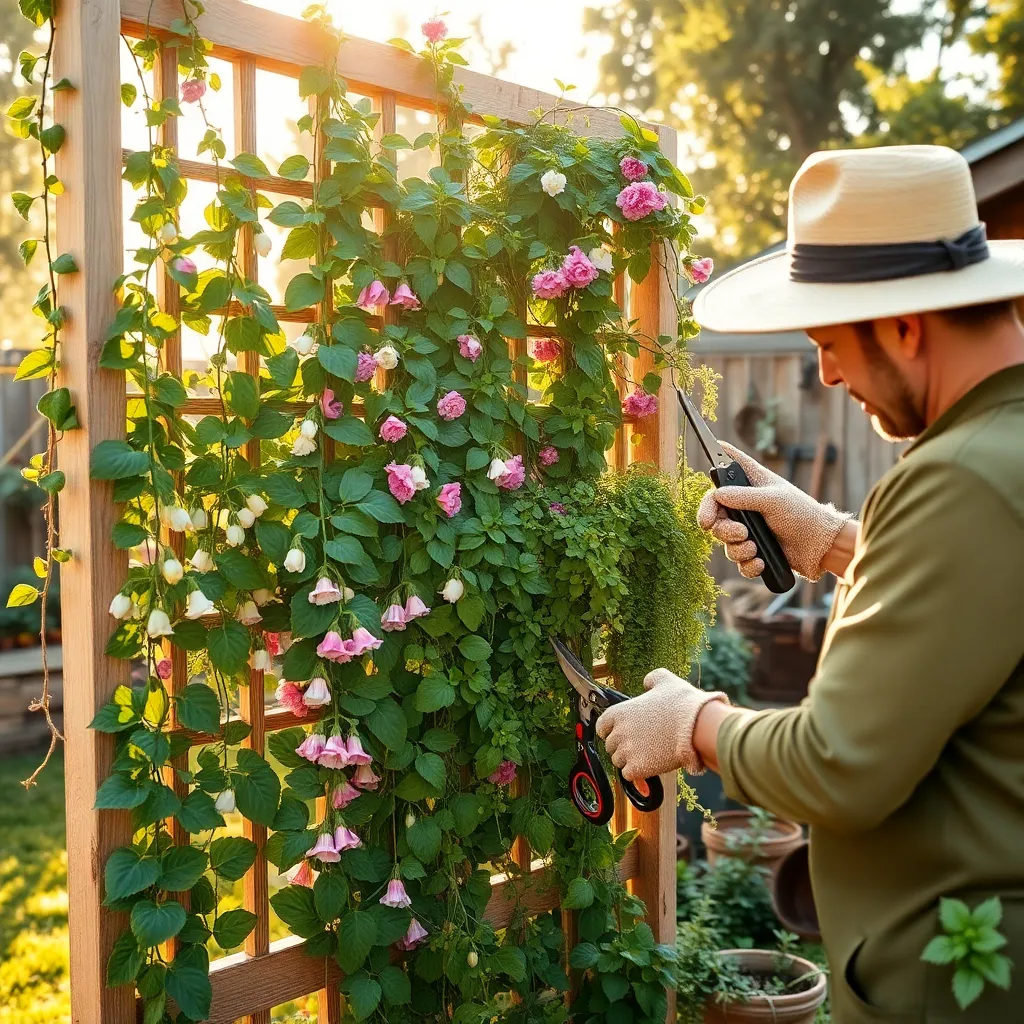
Maintaining a vertical garden throughout the year requires consistent care and attention. Start by ensuring your plants receive adequate sunlight, as most vertical gardens thrive in at least six hours of direct sunlight daily.
Watering is crucial, especially for vertical gardens, which can dry out quickly due to their exposed structure. Consider installing a drip irrigation system to provide a steady supply of moisture, especially during the hotter months.
Regularly check for signs of nutrient deficiency, such as yellowing leaves or stunted growth. Use a balanced, slow-release fertilizer every few months to keep your plants healthy and vibrant, adjusting the type and amount based on the specific needs of your plants.
Pruning is an essential maintenance task that promotes healthy growth and keeps your garden looking neat. Trim back any dead or overgrown foliage regularly, and be sure to remove any diseased plants to prevent the spread of infections.
Inspect your vertical garden for pests, which can quickly become problematic in these compact setups. Use natural pest control methods, like introducing beneficial insects or applying neem oil, to keep unwanted visitors at bay without harming your plants.
For those with more experience, consider experimenting with seasonal plant rotations to maximize use of space and ensure year-round productivity. Swap out cool-season crops for warm-season ones as the weather changes, adapting your garden to the seasons’ demands.
Conclusion: Growing Success with These Plants
In summary, nurturing relationships, much like growing a vertical garden, requires careful attention and intention. First, we explored how consistent communication is akin to watering plants regularly—essential for growth. Second, prioritizing quality time acts as fertile soil, fostering deep roots. Third, recognizing and celebrating small wins is like sunlight, energizing your connection. Fourth, adapting to changes and challenges is essential, comparable to adjusting to varying weather conditions. Finally, setting shared goals provides a trellis for support and direction.
As an immediate next step, consider scheduling a weekly “relationship check-in” with your partner to discuss these concepts and strengthen your bond. This simple act can be transformative.
Remember, relationships flourish when tended to with care and commitment. Be sure to bookmark this article as a handy reference to revisit these nurturing strategies. By doing so, you’re investing in a garden of love that will continue to bloom.
Looking ahead, the success of your relationship lies in the seeds of effort you plant today. With dedication and love, a thriving partnership is within reach. Now is the perfect time to cultivate your relationship’s potential—start today, and watch it grow!

